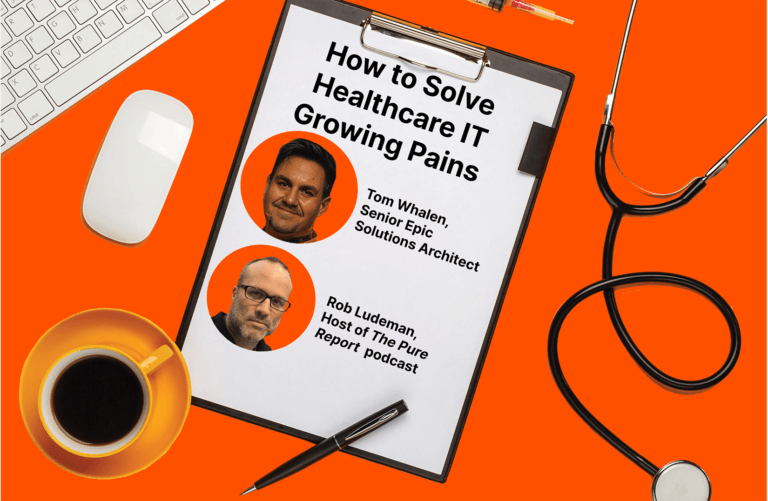Automation is no longer novel—it’s practical. Artificial intelligence (AI) is already so integrated into our lives that we take it for granted—although we do appreciate its always-on availability, efficiency, and accuracy.
Not surprisingly, many organizations are looking to implement AI in IT and data scenarios, where there’s an alluring promise to increase capacity and productivity—without increasing headcount. AI has the power to both augment and replace roles, but for database administrators (DBAs) and IT professionals, is automation really a threat?
What’s the Perceived Threat?
“Optimists say that machines will free human workers to do higher-value, more creative work. Pessimists predict massive unemployment or even an apocalypse in which humans merely serve robots. Of course, both the optimists and the pessimists are partially correct and partially wrong.” Ravin Jesuthasan, Reinventing Jobs
The benefit to the bottom line is hard to dispute: When IT organizations are being asked to do more all the time, often with limited resources, AI can help them save money, drive innovation, and optimize operations.
Automation is definitely going to take certain tasks from humans—technology has been doing this for decades. But concern bubbles up when you start delegating the bulk of a workflow to AI. What’s leftover for the human to manage becomes a role that’s easy to consolidate—or even eliminate.
Here’s where DBAs are looking at the traditional role of a dedicated IT manager and wondering what their future holds.
World, Meet the Real AI
Before we go any deeper, let’s pull the mask off of automation. What does it look like, and what can it do for everyone—and for DBAs in particular?
Let’s start by looking at how experts approach automation and the job description as we know it. In his book Reinventing Jobs, author and managing director of Willis Towers Watson, Ravin Jesuthasan notes that “jobs contain many tasks that have different automation compatibility and payoff.” The upshot? It only makes sense to automate certain aspects of a job—the rest is best left to a human.
To determine which jobs have the best automation ROI, Jesuthasan suggests deconstructing roles into tasks within three categories:
- Repetitive or variable
- Independent or interactive
- Physical or mental
Tasks will be a combination of attributes. Some will be perfect for automation (for example, manually managing role-based access controls and password resets, which is a repetitive, independent, and mental task). Others won’t be (like understanding the value of data and where and how it can be leveraged in the business, which is variable and interactive).
Next, you’d determine what type of automation is a fit:
- Robotic process automation (RPA): Well-suited for high-volume, low-complexity tasks
- Cognitive automation: Human, brain-like algorithms and networks well-suited for complex tasks like natural language processing or pattern recognition
- Social robotics: Humans and robots interacting to get work done
For DBAs, some examples of tasks may be:
- Automated, accurate, and timely reporting across all managed databases
- As-a-service infrastructure deployment for users
- Centralized and automatic tuning, monitoring, and patching
- Policies around role-based access, encryption, and recovery
- Development workflow management with cloud-native tools
- Provisioning, diagnostics, and performance tuning
- Eliminating weekend maintenance
- Predictive monitoring with tools like the AI-powered Pure1® storage management app from Pure Storage®
- Automated scaling and workload predictions with Pure1 workload simulations
Tip: Engaging professional services from an IT vendor, like Pure Storage, is a great way to identify, plan, and complete these automation projects. These experts can help you bring experience, tools, and processes to any automation project.
DBAs might look at that list and wonder if automating those tasks would leave gaps so big their role could be consolidated. Or, they might be relieved at the thought of getting those mundane and often tedious responsibilities off of their plates for good—and the opportunities that will open up.
But remember: Not all tasks are a fit for automation, and deconstructing a role into tasks and quantifying a data expert’s value to the organization are two very different things.
Automation Is a Complement, Not the Competition
Human potential is rarely measured by people’s ability to do low-level tasks for hours on end. Studies show this kind of work makes humans less happy and less productive. Finding ways to let automation complement human jobs will result in more time and energy to put toward high-value tasks a machine can’t easily replicate—or fully replace.
“Rather than troubleshoot the same things day in and day out, technology has now become something to look forward to, and you realize, ‘This is how it should be.’”Peter Dunn, Director of Infrastructure, Lamar Advertising
And making life easier with automation can make humans feel happier—or at least more positive and empowered. Take Pure1, a tool that leverages AI, machine learning, and predictive analytics to automate capacity planning and proactively monitor for issues. Global Response’s CEO says that Pure1 “gives me the confidence to support our most aggressive growth strategies.”
As automation continues to expand, humans will still be needed to offer big-picture thinking, brainstorming, tact and discretion, and problem-solving—the entrepreneurial, mission-focused qualities AI cannot bring to the table. And DBAs should keep in mind that they need to apply a good amount of creativity and intuition, and soft skills like communication and collaboration, in their everyday work. When you factor in how much data is expected to grow, it’s not as if DBAs’ jobs will get any lighter, right?
The Opportunity: Evolve from Observer to Consultant
So, how can DBAs and other IT professionals learn to live with the reality of ever-expanding automation—and transform their thinking about it so they can see it as an opportunity, not a threat?
“What’s more, research shows that intrinsic motivators are quite powerful, and people have a need for autonomy, growth, and meaning in their work. In other words, people want to learn and grow.” The Technology Fallacy
The answer is to look at automation as “work, upgraded.” Remove repetitive tasks, and in return, you get more time, energy, and opportunity to do bigger and better things. And there will be bigger and better things on the horizon as data volumes continue to explode and AI accelerates. AI requires skilled data professionals to configure systems, train models, and continually improve data pipelines. Therein lies the opportunity to evolve into a DBA who’s more likely to be promoted than replaced.
DBAs can start by considering all the “human” value they can add in a more automated future and think more about:
- Data’s role in AI, ML, and deep learning: Diversify your skills and go full-stack. Add AI and ML tools to your toolbox. Get involved in data pipelines, embrace MLOps (machine learning operations), and be the invaluable consultant who can connect data—a company’s most valuable asset—across and between every initiative.
- Configuration and customization: For all the simplicity modern technology can provide, configuration will differ between organizations and likely won’t be obsolete. Understanding how to configure solutions specifically for AI and ML workloads will be crucial knowledge.
- Consulting, problem-solving, and strategy: DBAs can be trusted advisers within the organization and valuable go-betweens to explain what the value and use case of the technology is and how it works. Be a point person with creative problem-solving skills—for reassuring and communicating challenges and interpreting data. When it comes time to adopt or embrace something new, DBAs can step in and explain what’s needed and why.
- Being data liaisons: Software can’t easily interface with stakeholders and answer questions, but DBAs can. Learn the business you’re in. As data and insights become more important to every workflow, anticipate that soft skills will be assets companies can’t replace.
- Security’s role in data storage: Whereas some organizations are feeling the pressure to hire dedicated compliance officers, become an expert in the latest regulations and recommendations for data governance. If you can make compliance your business, you’ll be even more invaluable as compliance becomes more departments’ responsibility.
The future of data is wide open, and AI will rely on high-quality data to be a success. For DBAs, there’s plenty of opportunity in that future—you just need to seize it.
![]() Get inspired: 10 Ways to Improve Data Management with Automation
Get inspired: 10 Ways to Improve Data Management with Automation






